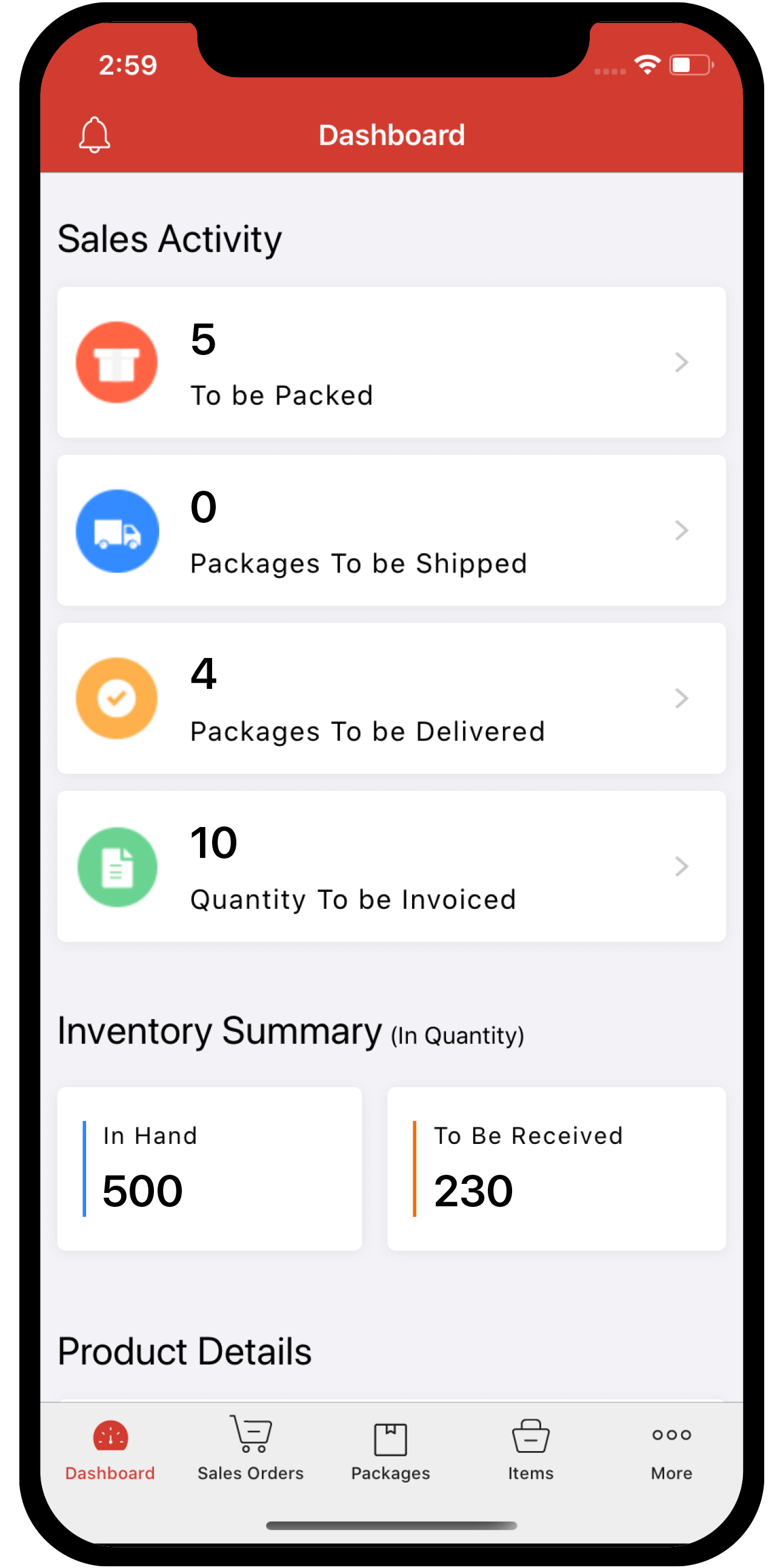 Inventory
Inventory
e-Way Bills
An e-way bill is an electronically generated document necessary for the movement of goods within or outside the states of India. e-Way bill replaces the waybill, which was a physical document used in the previous VAT system.
An e-way bill has two parts:
- Part A: contains the details of a consignor, consignee, supply type, item details and transport mode.
- Part B: contains details of the transporter.
If you’re initiating the movement of goods and transporting the goods yourself, you have to furnish both Part A and B details. If you have outsourced the transportation, then the transporter must furnish the Part B details. The consignor or the sender can also authorise a consignee such as the buyer, transporter, courier agency or e-commerce operator to fill Part A of the e-Way bill on their behalf.
When do you need an e-Way bill?
An e-Way bill is necessary in the following cases:
- When you transport goods worth Rs.50,000 or more, irrespective of the mode of transport.
- When you move any goods outside the state for job work(irrespective of its value).
- When you transport handicraft goods(irrespective of its value).
- When you transport goods up to a distance of 50 km, an e-Way bill has to be generated with Part A details alone and does not require Part B details.
- During the movement of goods, the transporter must carry a transport document such as an Invoice, Bill of Supply or Delivery Challan along with the e-Way Bill Number mentioned on it.
An e-Way bill is not necessary in the following cases:
- When you supply goods worth less than Rs 50,000, irrespective of the destination.
- When you transport goods by non-motorised vehicles.
- When the place of departure is from a port, airport, air cargo station or any station where the clearance is by the Customs Department.
- When you transport exempted goods, irrespective of the total value.
Next >
Related >








